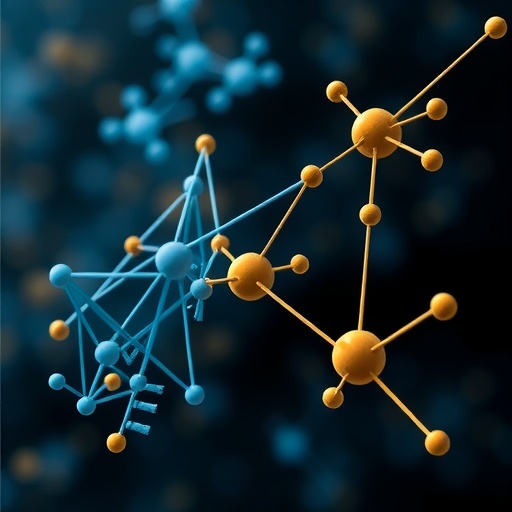In the vast molecular world that orchestrates life’s myriad processes, enzymes stand out as nature’s most efficient and precise catalysts. These biological macromolecules perform critical functions by accelerating chemical reactions necessary for cell survival and function. One of the defining features of enzymes is their substrate specificity—the intricate ability to recognize, bind, and transform specific molecules among countless others present in the cellular milieu. This specificity is largely governed by the three-dimensional architecture of the enzyme’s active site, a complex spatial arrangement that complements the structure of its substrate and stabilizes the reaction’s transition state.
Despite decades of biochemical research deciphering enzyme mechanisms, a comprehensive and reliable determination of enzyme substrate specificity remains a significant challenge. The complexity arises because many enzymes exhibit promiscuity, showing the ability to act on multiple substrates or catalyze diverse reactions. This promiscuity, while a fascinating feature from an evolutionary perspective, complicates efforts to predict enzyme behavior and design enzymes for industrial or therapeutic applications. Moreover, the sheer volume of known enzymes—millions catalogued across species—lacks detailed substrate specificity annotation, representing a critical gap in our understanding and utilization of biocatalysts.
Addressing this challenge, researchers have turned to advances in artificial intelligence and machine learning, particularly models capable of integrating sequence and structural data to predict substrate-enzyme interactions. A breakthrough approach has been unveiled in the recent study by Cui, H., Su, Y., Dean, T.J., and colleagues, who developed a novel graph neural network architecture termed EZSpecificity. Powered by a cutting-edge cross-attention mechanism and designed to respect the symmetry of three-dimensional space (SE(3)-equivariance), EZSpecificity pioneers a new era in enzyme substrate specificity prediction.
The architecture of EZSpecificity reflects the complexity of molecular interactions by modeling enzymes and substrates as graphs, in which atoms and residues are nodes connected by edges representing biochemical interactions. Unlike traditional convolutional networks, the SE(3)-equivariant framework allows the model to understand spatial relationships invariant to rotations and translations, a crucial property in molecular systems where absolute orientation in space is arbitrary but relative positioning defines function. The cross-attention mechanism further enhances the model’s predictive power by enabling dynamic, context-sensitive communication between enzyme and substrate representations, better mimicking the induced fit and other subtle binding phenomena observed experimentally.
Training EZSpecificity required a robust, tailor-made database capturing the nuanced enzyme-substrate interaction landscape. This extensive dataset integrated both sequence information and three-dimensional structural data of enzymes and their substrates, allowing the model to learn patterns and features underlying substrate selectivity across diverse protein families. The comprehensiveness and quality of this training set are fundamental to EZSpecificity’s superior performance over existing computational models, which often rely solely on sequence or physicochemical features without fully exploiting structural dynamics.
Validation of EZSpecificity’s efficacy came through rigorous testing on both unknown enzyme-substrate pairs and well-characterized protein families used as proof-of-concept benchmarks. Impressively, the model consistently outperformed state-of-the-art methods, demonstrating higher accuracy in predicting the correct substrates for enzymes with no prior data in the training set. This generalizability is a transformative advance, indicating that the neural network has captured fundamental principles of enzyme specificity rather than overfitting to particular examples.
The ultimate testament to EZSpecificity’s practical utility was its experimental validation with halogenases, a class of enzymes known for their critical role in introducing halogen atoms into organic compounds—a reaction of great value in drug development and synthetic chemistry. Testing 78 substrates across eight halogenase variants, EZSpecificity achieved a remarkable 91.7% accuracy in identifying the single reactive substrate. This accuracy starkly contrasts with the 58.3% accuracy achieved by the previous best model, ESP, underscoring the quantum leap introduced by the novel graph neural network architecture.
These experimental results not only confirm the predictive power of EZSpecificity but suggest new possibilities for rational enzyme design and engineering. By accurately forecasting substrate specificity, researchers can better tailor biocatalysts for industrial processes, synthetic biology applications, and therapeutic enzyme development. The ability to computationally screen enzymes and substrates with high precision will accelerate the discovery pipeline, reducing experimental costs and time.
Beyond enzyme engineering, EZSpecificity’s approach hints at broader applications in the life sciences. Understanding molecular recognition processes is central to drug discovery, metabolic engineering, and systems biology. The integration of equivariant graph neural networks with cross-attention mechanisms could be adapted to model protein-protein interactions, ligand binding in receptors, or even macromolecular assembly dynamics—frontiers with profound scientific and medical implications.
The work of Cui and colleagues exemplifies the fruitful synergy between computational innovation and biochemical insight. By embedding physical symmetry considerations and attentional focus within a sophisticated graph neural model, they have pushed past existing barriers to elucidate the complex determinants of enzyme specificity. This convergence of disciplines heralds a future where predictive models capture the subtlety of biological systems with unprecedented fidelity.
As the field progresses, integrating richer dynamic information—such as enzyme conformational changes over time—and expanding training datasets with novel experimental structures will further enhance model capabilities. Coupling these developments with experimental enzyme engineering will empower a new generation of biocatalysts optimized for sustainability, efficiency, and precision.
In conclusion, EZSpecificity stands as a landmark in computational enzymology, demonstrating that deep learning architectures, grounded in physical principles and amplified via cross-attention, can successfully decode the enigmatic language of enzyme specificity. This achievement not only enriches our fundamental understanding of molecular biology but also lays the groundwork for innovative applications at the interface of biology, chemistry, and artificial intelligence.
Subject of Research: Enzyme substrate specificity prediction using advanced machine learning techniques.
Article Title: Enzyme specificity prediction using cross attention graph neural networks.
Article References:
Cui, H., Su, Y., Dean, T.J. et al. Enzyme specificity prediction using cross attention graph neural networks. Nature (2025). https://doi.org/10.1038/s41586-025-09697-2
Image Credits: AI Generated
Tags: artificial intelligence in enzyme researchbiocatalyst development strategiesbiochemical mechanisms of enzymescomputational biology and enzyme predictionenzyme promiscuity challengesenzyme specificity predictiongraph neural networks in biochemistryindustrial applications of enzymesmachine learning for enzyme designsubstrate recognition by enzymestherapeutic enzyme design techniquesthree-dimensional enzyme architecture





